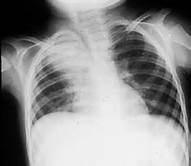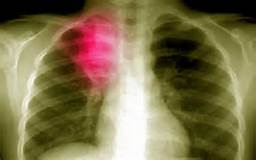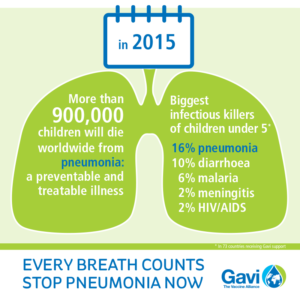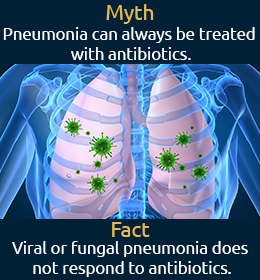Important facts to know about pneumonia via The American Thoracic Society (https://www.thoracic.org):
- Pneumonia is an infection of the lung.The lungs fill with fluid and make breathing difficult. Pneumonia disproportionately affects the young, the elderly, and the immunocompromised. It preys on weakness and vulnerability.
- Pneumonia is the world’s leading cause of death among children under 5 years of age, accounting for 15% of all deaths of children under 5 years old.There are 120 million episodes of pneumonia per year in children under 5, over 10% of which (14 million) progress to severe episodes. There was an estimated 935,000 deaths from pneumonia in children under the age of five in 2013.
- In the US, pneumonia is less often fatal for children, but it is still a big problem. Pneumonia is the #1 most common reason for US children to be hospitalized.
- For US adults, pneumonia is the most common cause of hospital admissions other than women giving birth. About 1 million adults in the US are hospitalized with pneumonia every year, and about 50,000 die from this disease.
- While young healthy adults have less risk of pneumonia than the age extremes, it is always a threat. Half of all non-immunocompromised adults hospitalized for severe pneumonia in the US are younger adults (18-57 years of age). Half the deaths from bacteremic pneumococcal pneumonia occur in people ages 18-64.
- Older people have higher risk of getting pneumonia, and are more likely to die from it. For most geriatrics it harder for their body to fight infection overall and pneumonia terribly weakens the person’s overall system with many geriatrics already immune compromised in someway.
For US seniors, hospitalization for pneumonia has a greater risk of death compared to any of the other top reasons for hospitalization.
- Pneumonia is the most common cause of sepsis and septic shock, causing 50% of all episodes. Sepsis is so common today in acute hospitals that is has gone national to have what we call s “septic code” like how a cardiac arrest in hospitals is either “blue code” or still in some a “red code” (since most hospitals have a “red code” for fires in the hospital. This is how much sepsis is common. Sepsis is hard to fight which can lead to SARS which in short is all systems in the body failing. To give you some tangibility in how high let us go to a great resource, The World Health Organization (WHO). They estimated that today the overall fatality rate for SARS (severe acute respiratory syndrome) patients at 14% to 15%, significantly higher than previous estimates. The agency estimated the rate for people older than 64 years to be more than 50%. That is how serious the diagnosis sepsis/SARS can be, especially for geriatrics!
- Pneumonia can develop in patients already in the hospital for other reasons. Hospital-acquired pneumonia has a higher mortality rate than any other hospital-acquired infection.
- Pneumonia can be caused by lots of different types of microbes, and no single one is responsible for as many as 10% of pneumonia cases. For most pneumonia patients, the microbe causing the infection is never identified.
- Vaccines are available for some but not many causes of pneumonia. The influenza vaccine is effective for those strains circulating that year, so it should be taken again every year. The pneumococcal pneumonia vaccines are recommended for those in higher risk groups (children, immunocompromised individuals, and seniors).
- In the US and the rest of the world, viral pneumonias arethe leading cause of hospitalization of infants. The World Health Organization has set a high priority on developing new vaccines and new therapeutic drugs to tackle these viral pneumonias that largely have no currently available vaccines or treatments. A.)Antibiotics can be effective for many of the bacteria that cause pneumonia.For viral causes of pneumonia, antibiotics are ineffective and should not be used. There are a few or no treatments for most viral causes of pneumonia. MD finds out by doing a culture. B.)Antibiotic resistance is growing amongst the bacteria that cause pneumonia.This often arises from the overuse and misuse of antibiotics in and out of the hospital. New and more effective antibiotics are urgently needed.
- Being on a ventilator raises especially high risk for serious pneumonia.Ventilator-associated pneumonia is more likely to be caused by antibiotic-resistant microbes and can require the highest antibiotic use in the critically ill population.
- Our changing interactions with the microbial world mean constantly developing new pneumonia risks.Emerging infections can lead to epidemics or pandemics, such as from avian influenza viruses (bird flu), severe acute respiratory system (SARS) coronavirus, Middle East Respiratory Syndrome (MERS) virus, and more. Environmental reservoirs or sources can cause clusters of infection, such as Legionella pneumonia. Bioweapons can cause pneumonia such as from anthrax. Vigilance is needed to prevent pneumonia from becoming an even worse problem than it already is.
- Patients with pneumonia may need to be hospitalized or even go to the intensive care unit (ICU).After developing pneumonia, it often takes 6-8 weeks until a patient returns to their normal level of functioning and wellbeing.
- While successful pneumonia treatment often leads to full recovery, it can have longer term consequences.Children who survive pneumonia have increased risk for chronic lung diseases. Adults who survive pneumonia may have worsened exercise ability, cardiovascular disease, cognitive decline, and quality of life for months or years.
- Pneumonia is a huge burden on our healthcare systems.In the US, pneumonia was one of the top ten most expensive conditions seen during inpatient hospitalizations. In 2011, pneumonia had an aggregate cost of nearly $10.6 billion for 1.1 million hospital stays.
- The death rate from pneumonia in the US has had little or no improvement since antibiotics became widespread more than half a century ago.We are not yet winning the battle against pneumonia.
- Pneumonia does not have effective advocacy.It is not the subject of fund-raising walks or runs. It does not have a ribbon or other symbol around which people rally. It does not get the attention it needs from biomedical scientists or from research funders. More effort is needed now.
- CDC states in the best to do is prevention like so many other good resources; CDC stated the following in prevention is the following: You are more likely to get pneumonia if you smoke or have underlying medical conditions, like diabetes or heart disease. However, you can lower your chances by taking good care of your medical problems, and quitting smoking.



